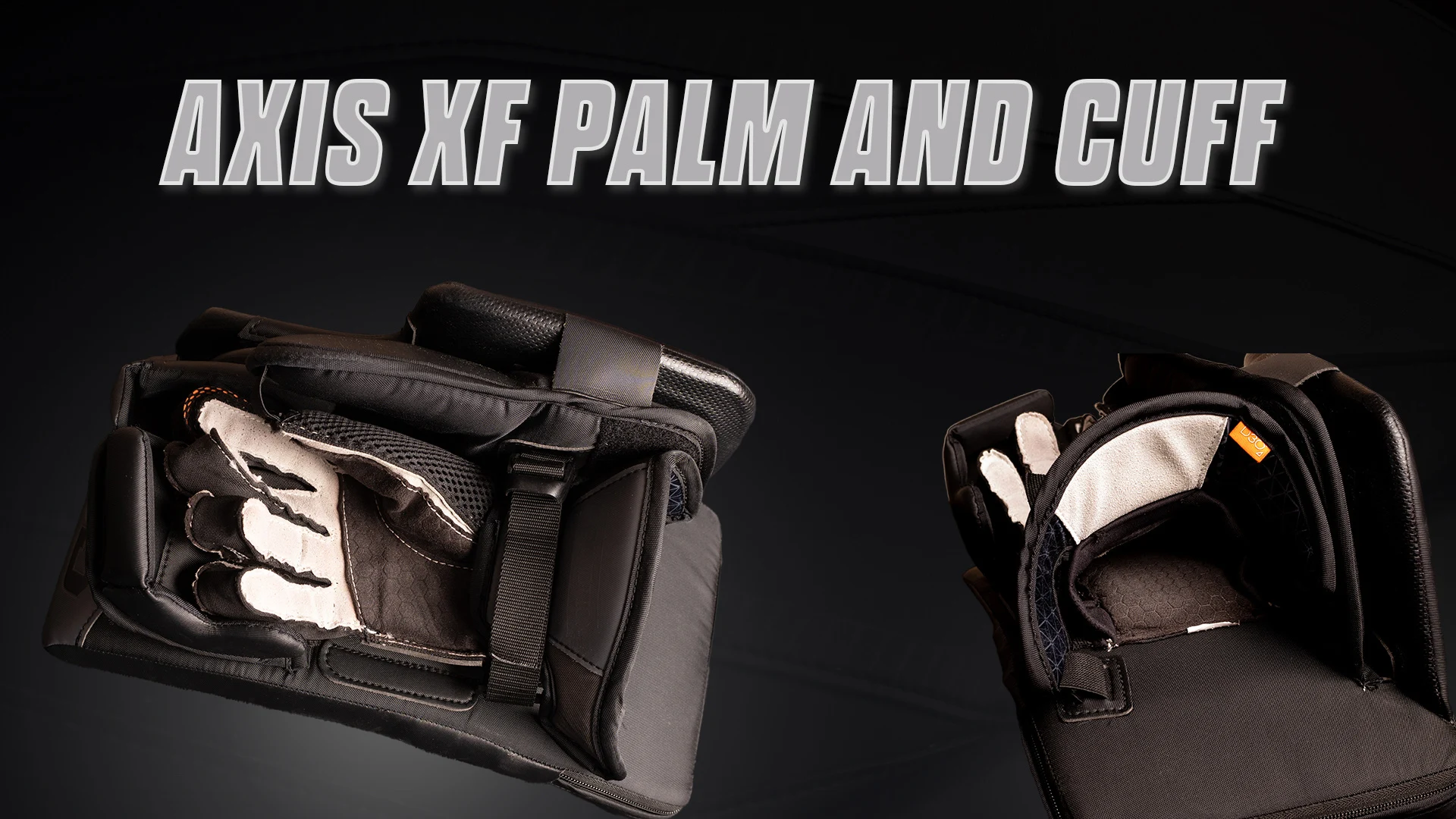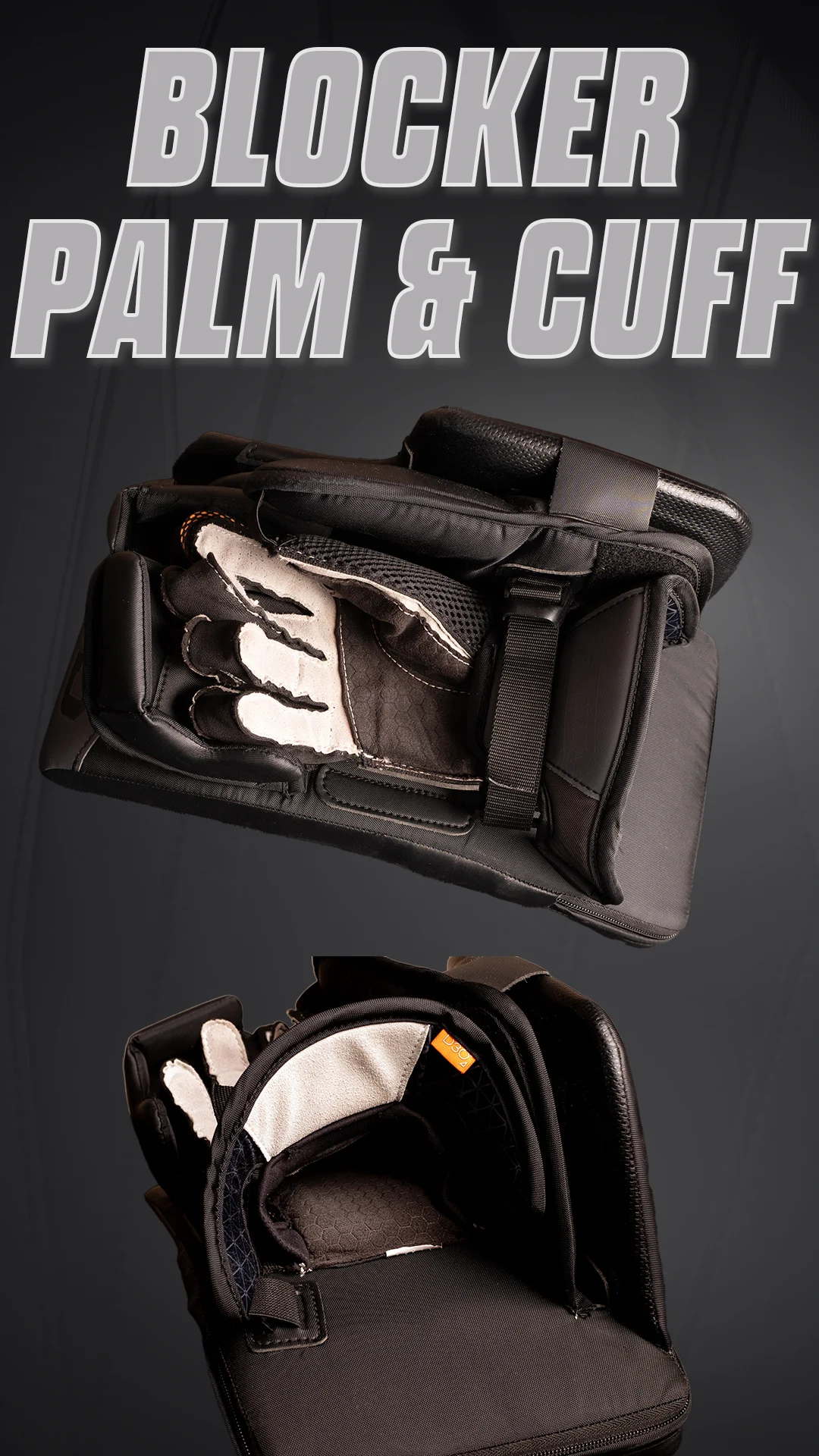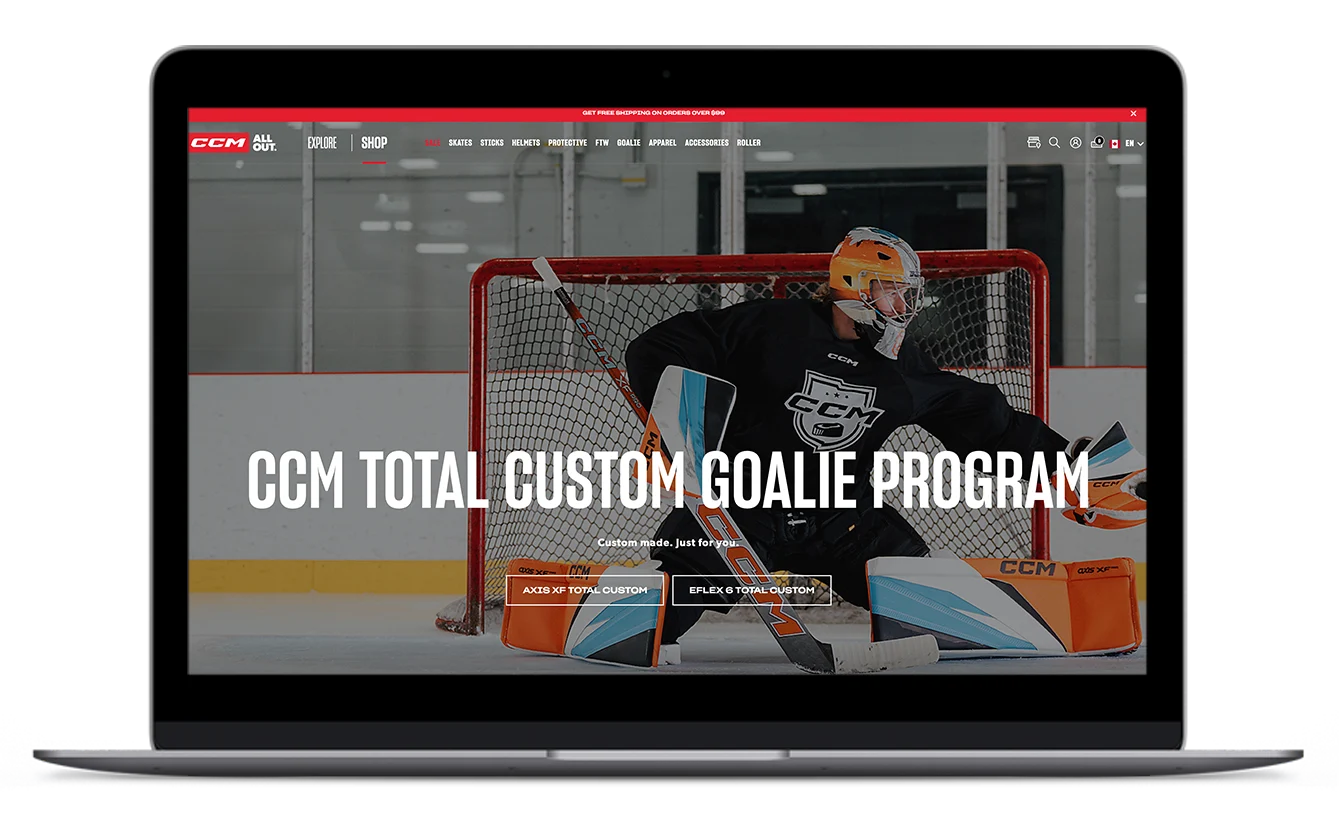Innovation meets performance
CCM'S AXIS XF now available for custom order
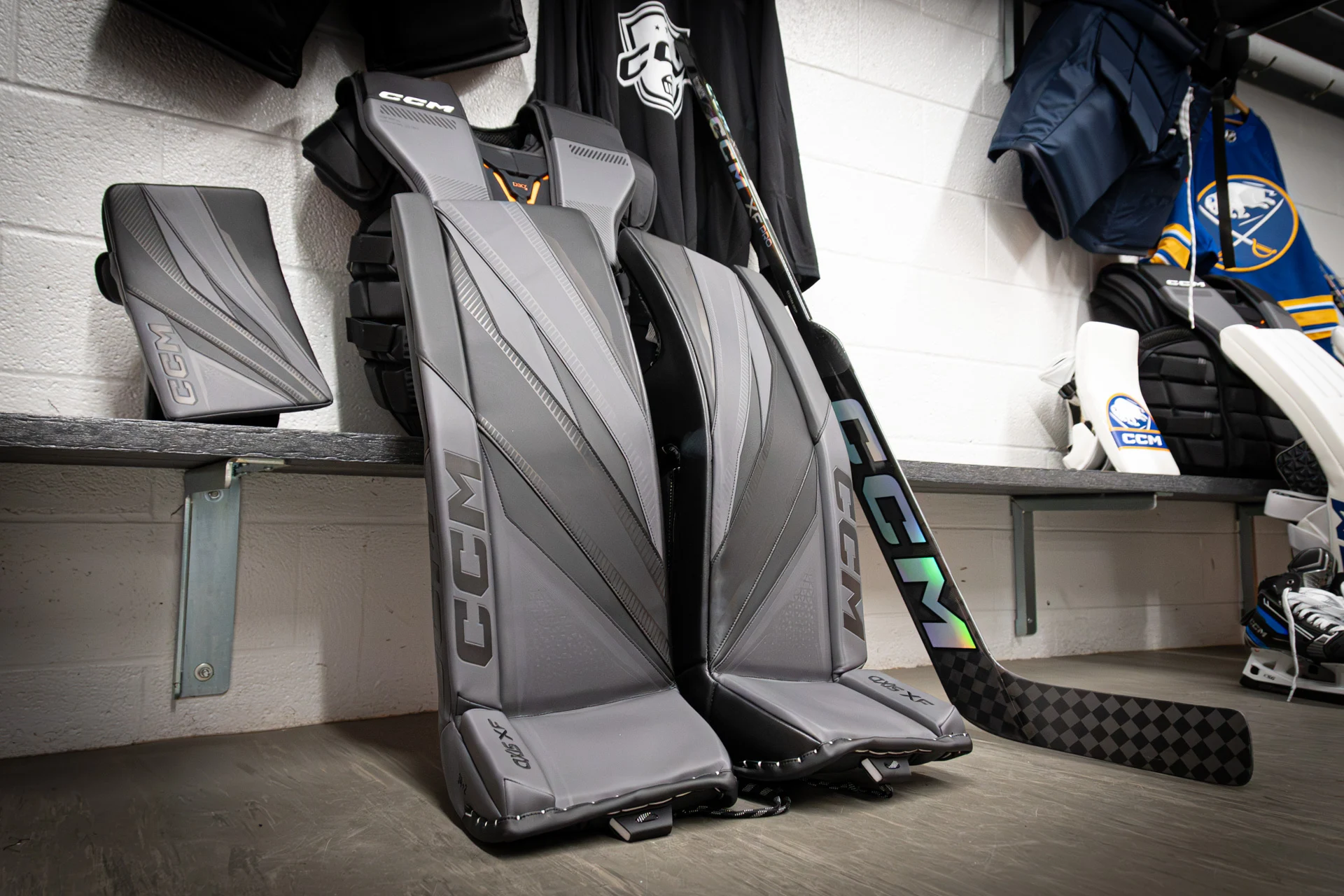
Of course, here at InGoal Magazine we’ve long prided ourselves with going way beyond the highlights with our in-depth reviews of new equipment, and after spending several days in Montreal last summer with a select group of NHL, AHL, CHL and NCAA goalies reviewing the design and testing processes for AXIS XF — both on the ice and in their high-tech hockey laboratory — we feel pretty well versed in this latest offering from CCM Goalie.
But with the launch of their customizer for AXIS XF this week, which means goalies can now design and order custom sets before it hits retail shelves, and a desire to have it on the ice ourselves longer before our usual deep dive, we figured we’d start with more of an overview.
So, consider this our take on the highlights of AXIS XF; an overview rather than a complete review, which we offer in the hopes it helps goalies understand how the line fits, feels and performs before deciding if this is the line of new gear that fits you and your game.
Demonstrably faster sliding pads in all kinds of ice conditions.
Measurably bigger rebounds off those pads (and to some degree the blocker too).
A glove that feels nicer, opens wider and closes easier.
That is the Coles Notes version of what’s new in the CCM AXIS XF line.
Of course, here at InGoal Magazine we’ve long prided ourselves with going way beyond the highlights with our in-depth reviews of new equipment, and after spending several days in Montreal last summer with a select group of NHL, AHL, CHL and NCAA goalies reviewing the design and testing processes for AXIS XF — both on the ice and in their high-tech hockey laboratory — we feel pretty well versed in this latest offering from CCM Goalie.
But with the launch of their customizer for AXIS XF this week, which means goalies can now design and order custom sets before it hits retail shelves, and a desire to have it on the ice ourselves longer before our usual deep dive, we figured we’d start with more of an overview.
So, consider this our take on the highlights of AXIS XF; an overview rather than a complete review, which we offer in the hopes it helps goalies understand how the line fits, feels and performs before deciding if this is the line of new gear that fits you and your game.
AXIS XF PADS
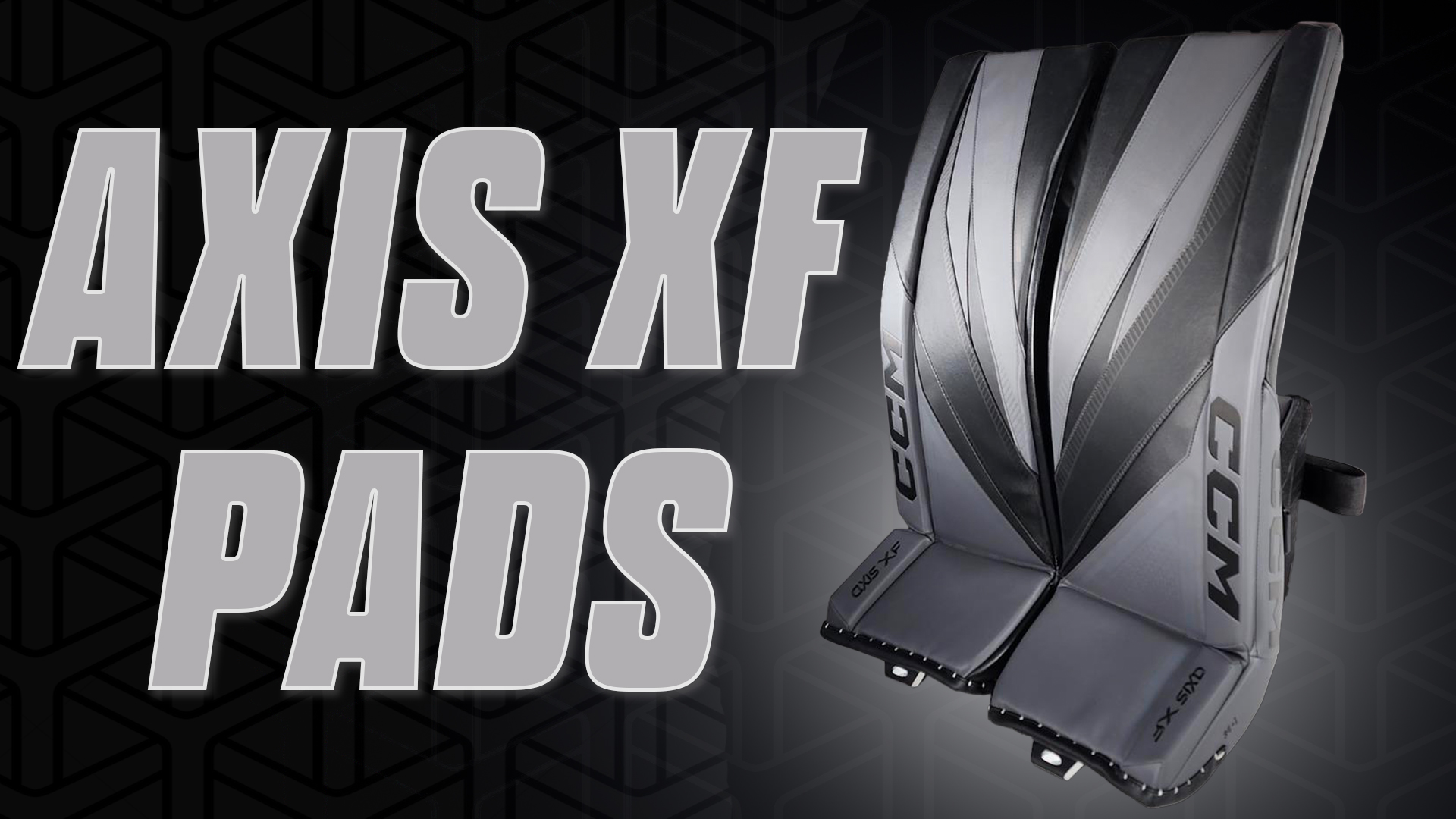
While the overall shape and feel of the AXIS XF is similar to AXIS 2, and more reminiscent of the stiffer Premier lines that preceded it when compared to the EFLEX line, there have been significant changes to the shape of the inside edge and materials.
The results are an even stiffer flex profile above the boot, which itself remains as flexible as its predecessor, that contributes to more active rebounds and better sliding.
How much better? And how much more active?
We’ll start with the sliding, which improves 24 to 39 percent depending on ice conditions, through a new combination of materials and modified shape on the inner edge.
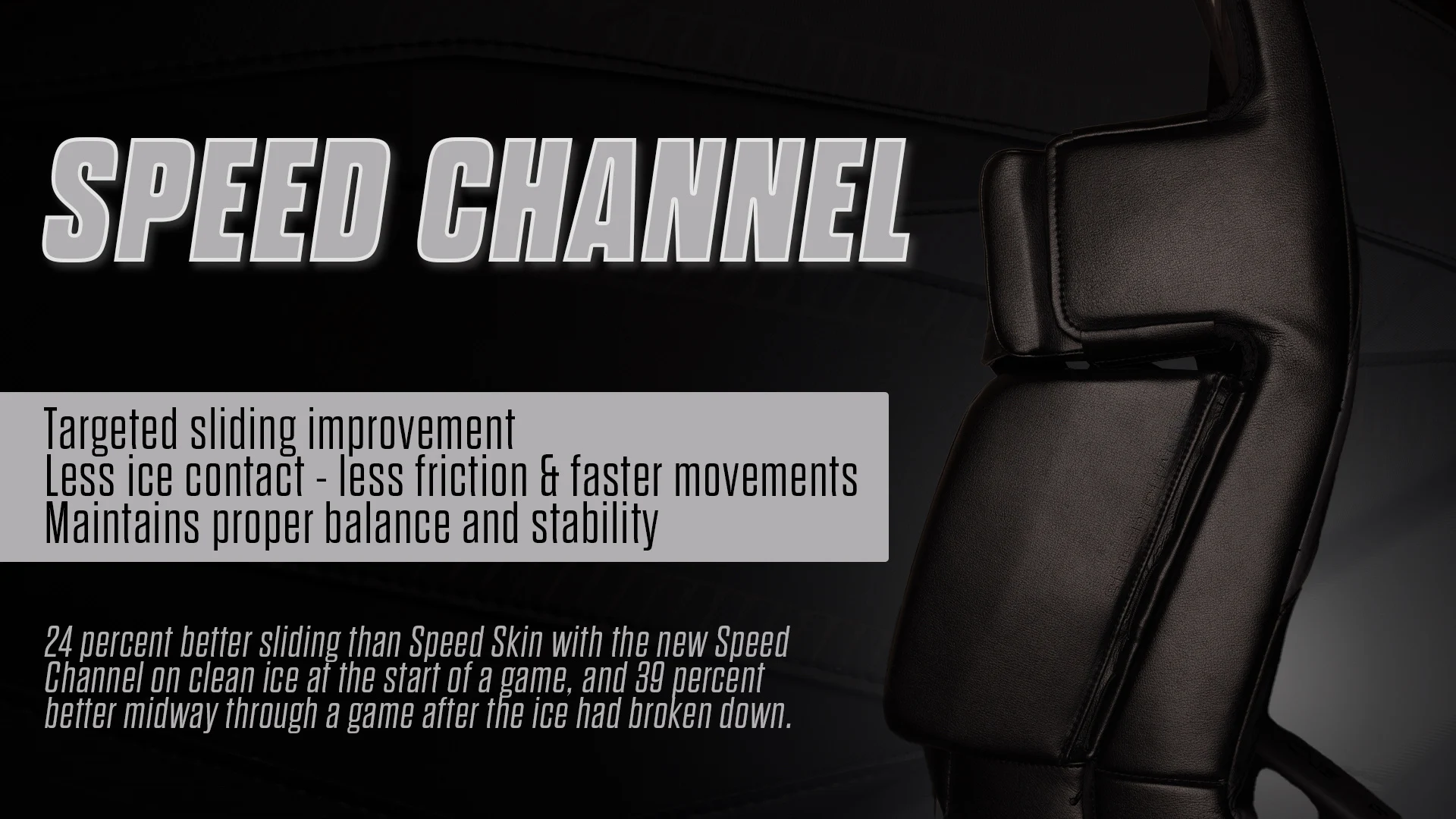
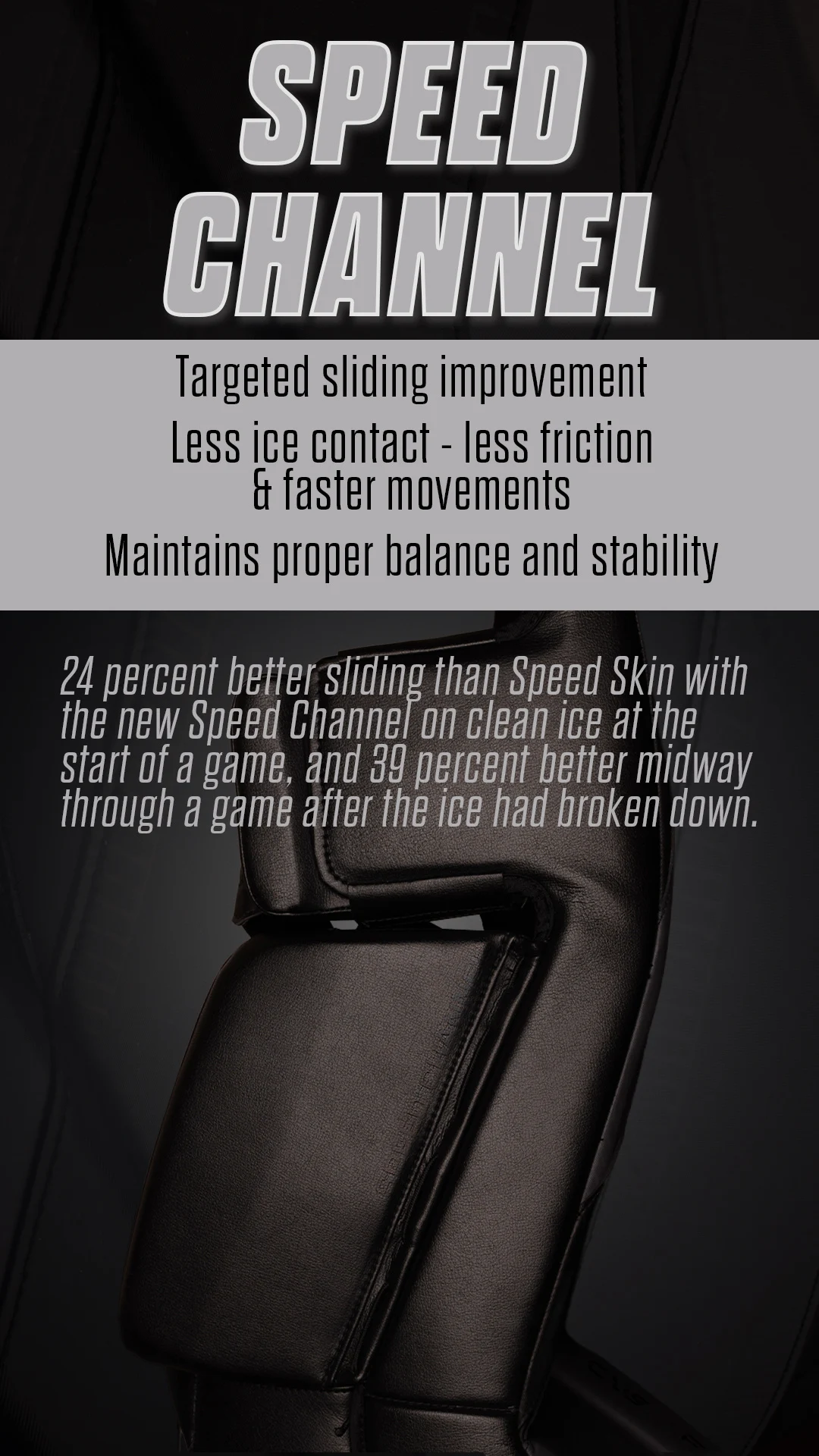
The new AXIS XF pad maintains the DRS Pro knee stack and one-piece inner landing area from AXIS 2, which helps get the pad to the ice faster and improves butterfly stability, but CCM has gotten rid of Speed Skin as an option on the inner edge and Speed Channel after extensive material and pad testing showed better sliding on their solid material.
CCM’s testing showed the Solid material performed 24 percent better than Speed Skin with the new Speed Channel on clean ice at the start of a game, and 39 percent better midway through a game after the ice had broken down. Interestingly, emboss material, which some goalies love and is still available on custom orders, performed 24 percent better than Speed Skin broken down ice, but was 6 percent worse on clean ice. So, while emboss is still an option, all the testing showed better performance with the Solid material.
The Speed Channel (above) features a leveled stabilizer that then tapers to the inner edge of the pad creating an inset channel and reducing friction when sliding.
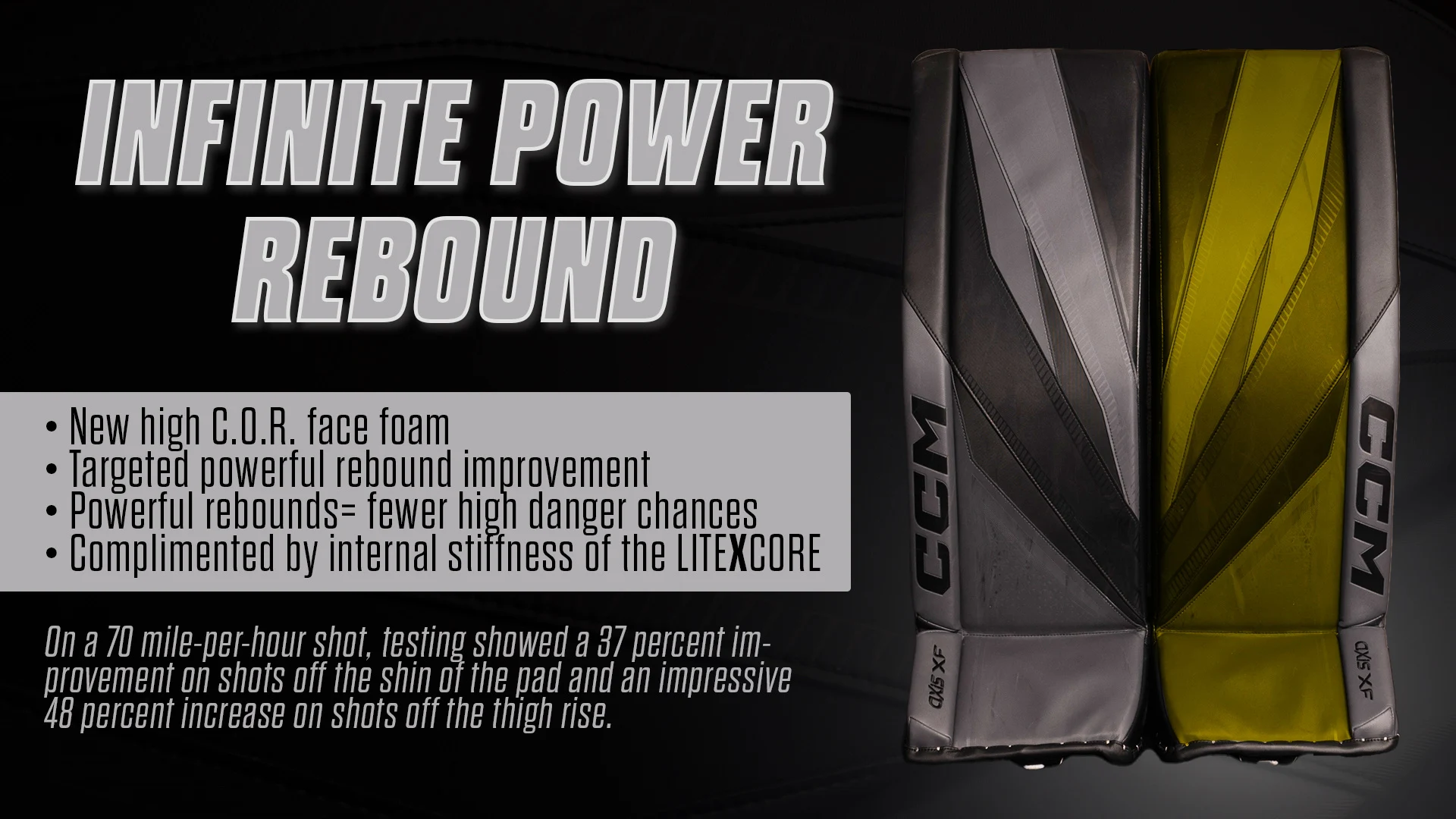
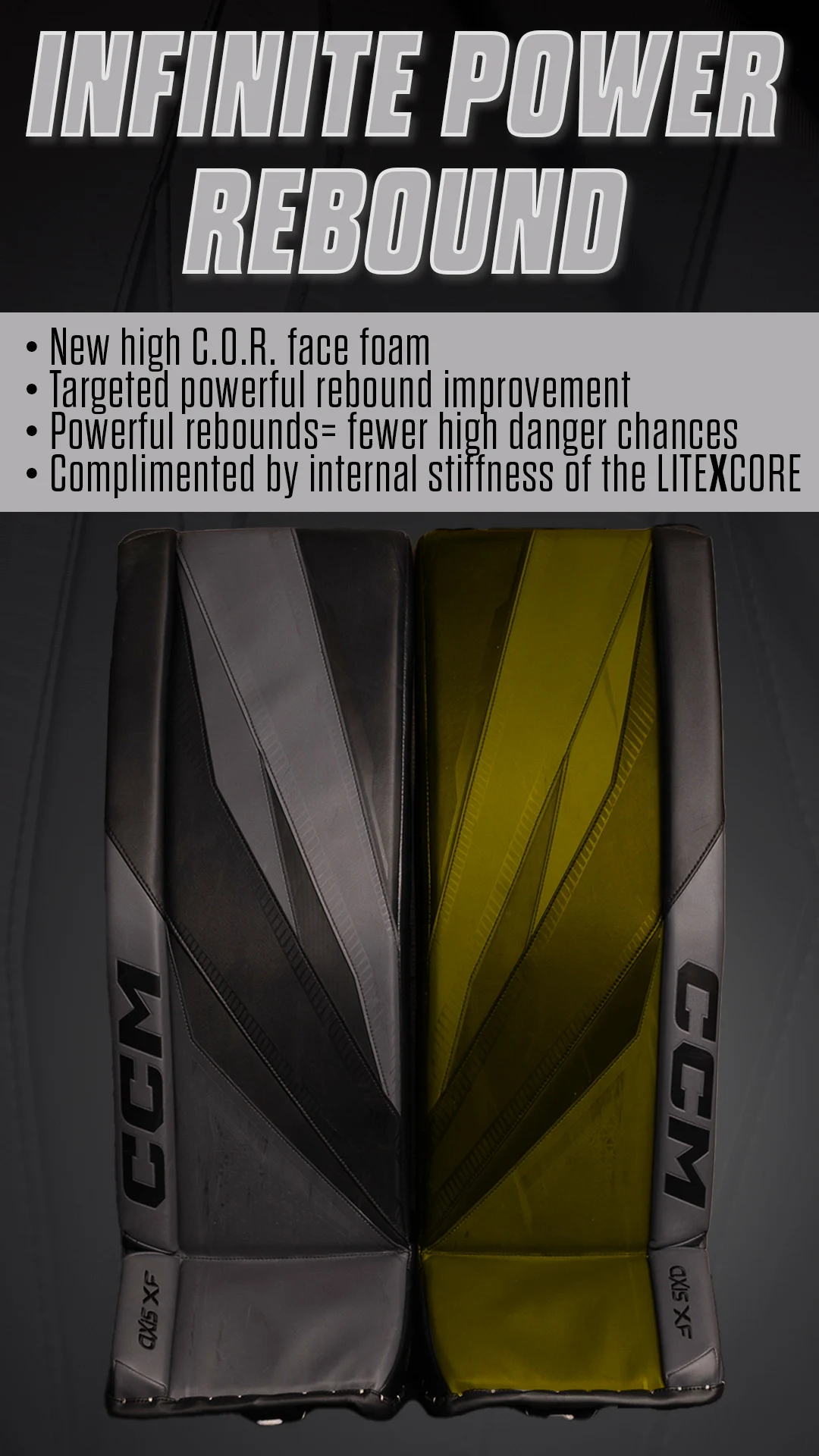
INFINITE POWER REBOUND (IPR)
The new high coefficient of restitution (C.O.R.) foam on the face of the pad (above) creates more powerful rebounds and fewer high danger chances.

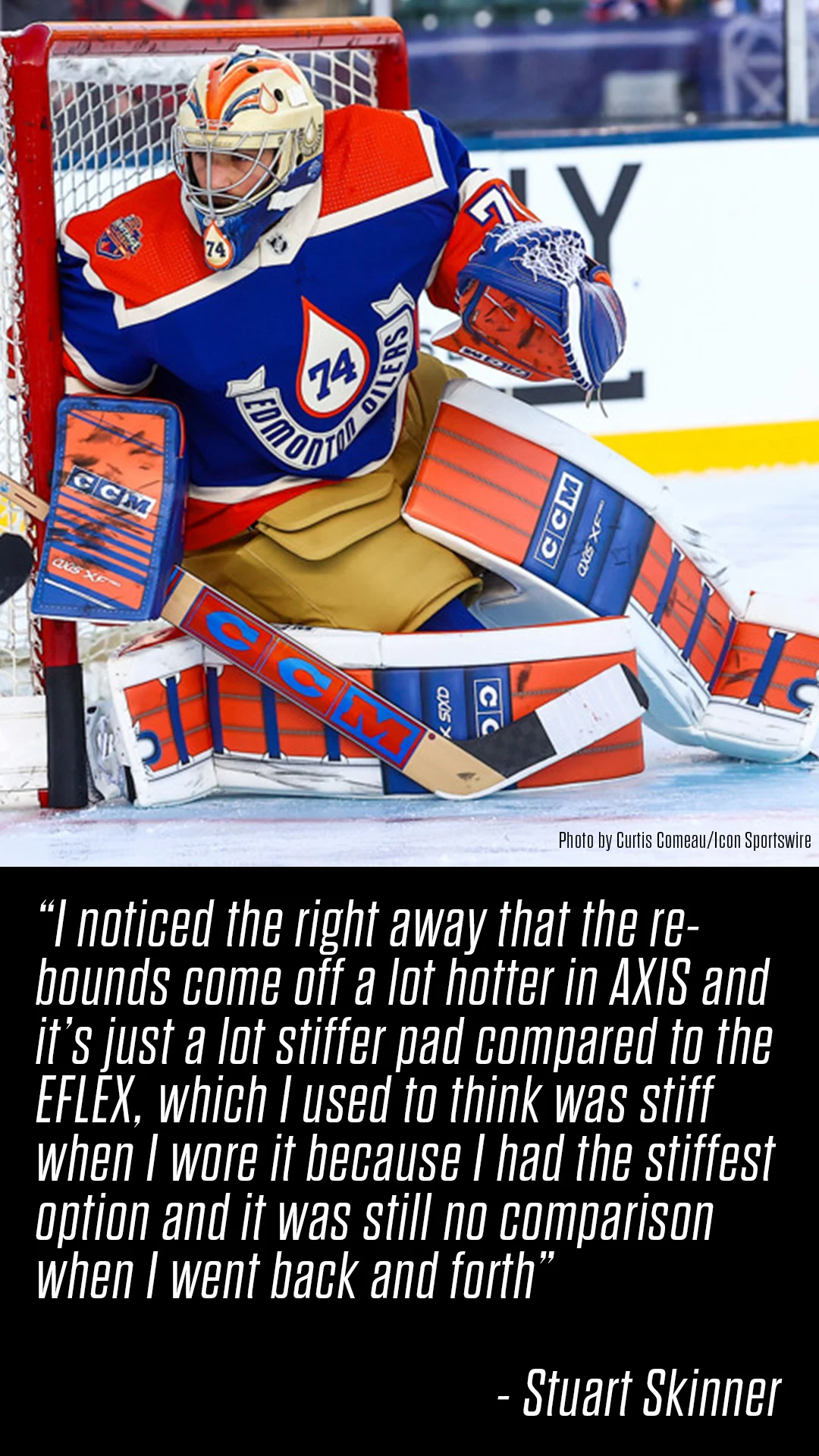
To make up for that, CCM significantly stiffened their internal LITEXCORE, and the results were the most active rebounds they’ve ever managed to achieve in testing.
It certainly made an impression on Edmonton Oilers goalie Stuart Skinner, who has been in the AXIS XF pads and gloves all season. At one point early in the year, Skinner went back to his EFLEX pads for a couple of practices to compare, but the IPR brought him back quick.
“I noticed the right away that the rebounds come off a lot hotter in AXIS and it’s just a lot stiffer pad compared to the EFLEX, which I used to think was stiff when I wore it because I had the stiffest option and it was still no comparison when I went back and forth,” Skinner told InGoal earlier this season. “For the pads and even the AXIS blocker, I think just getting rebounds the heck out of there gives you a little bit more time, and it gives the team even some more time, instead of you are scrambling in front of the net on shorter rebounds.”
The rest of the pad remains similar to AXIS 2, including the QMSS 2 strapping system, though like CCM did in the EFLEX6 pad, there is a bigger range of adjustment options for the inner strap that goes around the upper calf after many found the AXIS 2 strap too long.
The only other significant change for AXIS XF is a new toe tie system they call the Offset Hybrid Toe Elastic. It is a combination of skate lace at the toe bridge, which allows goalies to create specific gaps for their ideal post integration (Canucks No. 1 Thatcher Demko even has a formula for his perfect toe tie length), and then a bungee and Velcro straps that wrap around the skate at the end of the new set up, which wraps better around the skate and should be easier to attach than tying knots that can come undone during a game — or become hard to undo after a game.
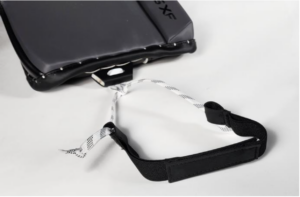
AXIS XF Glove
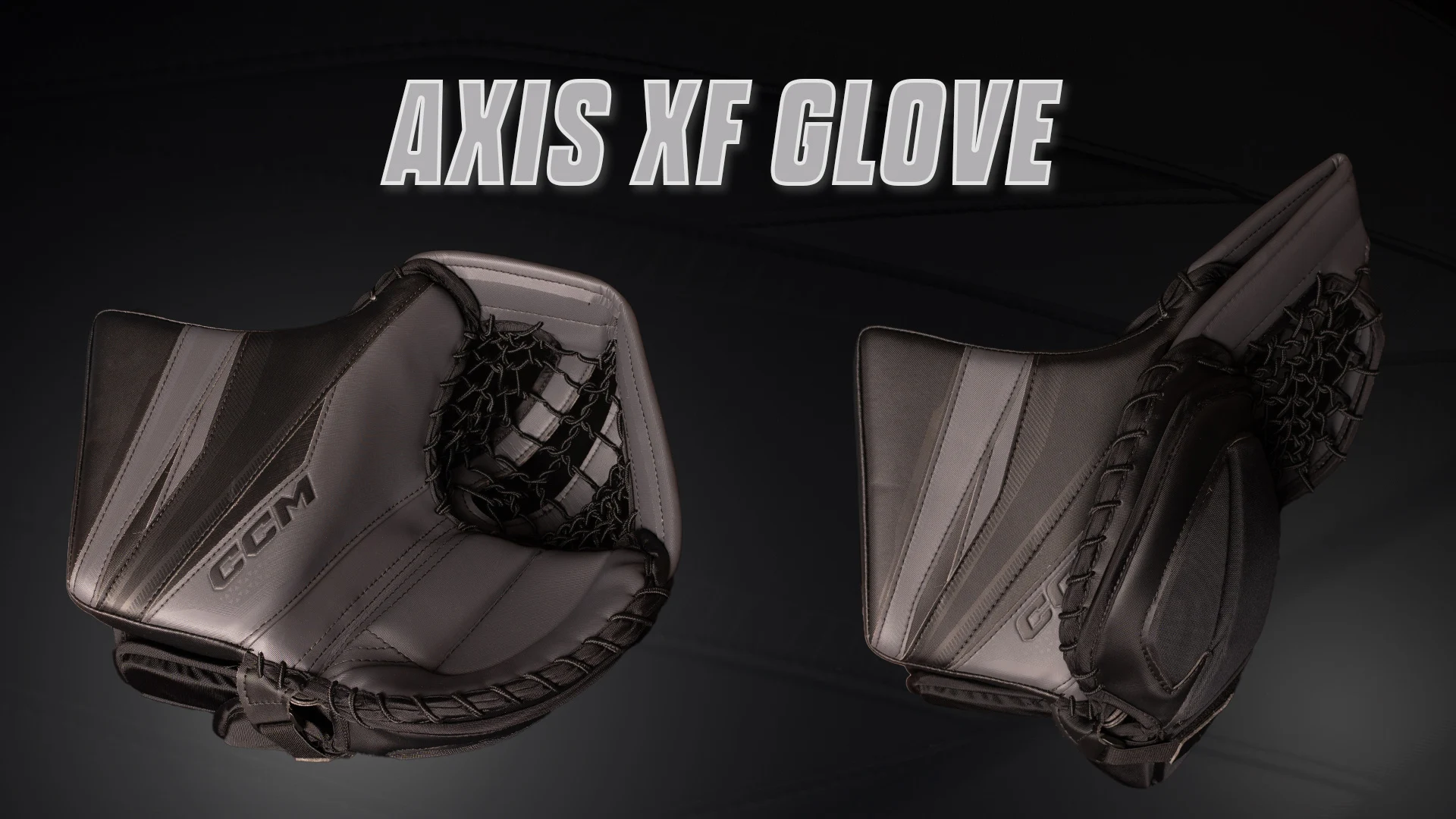
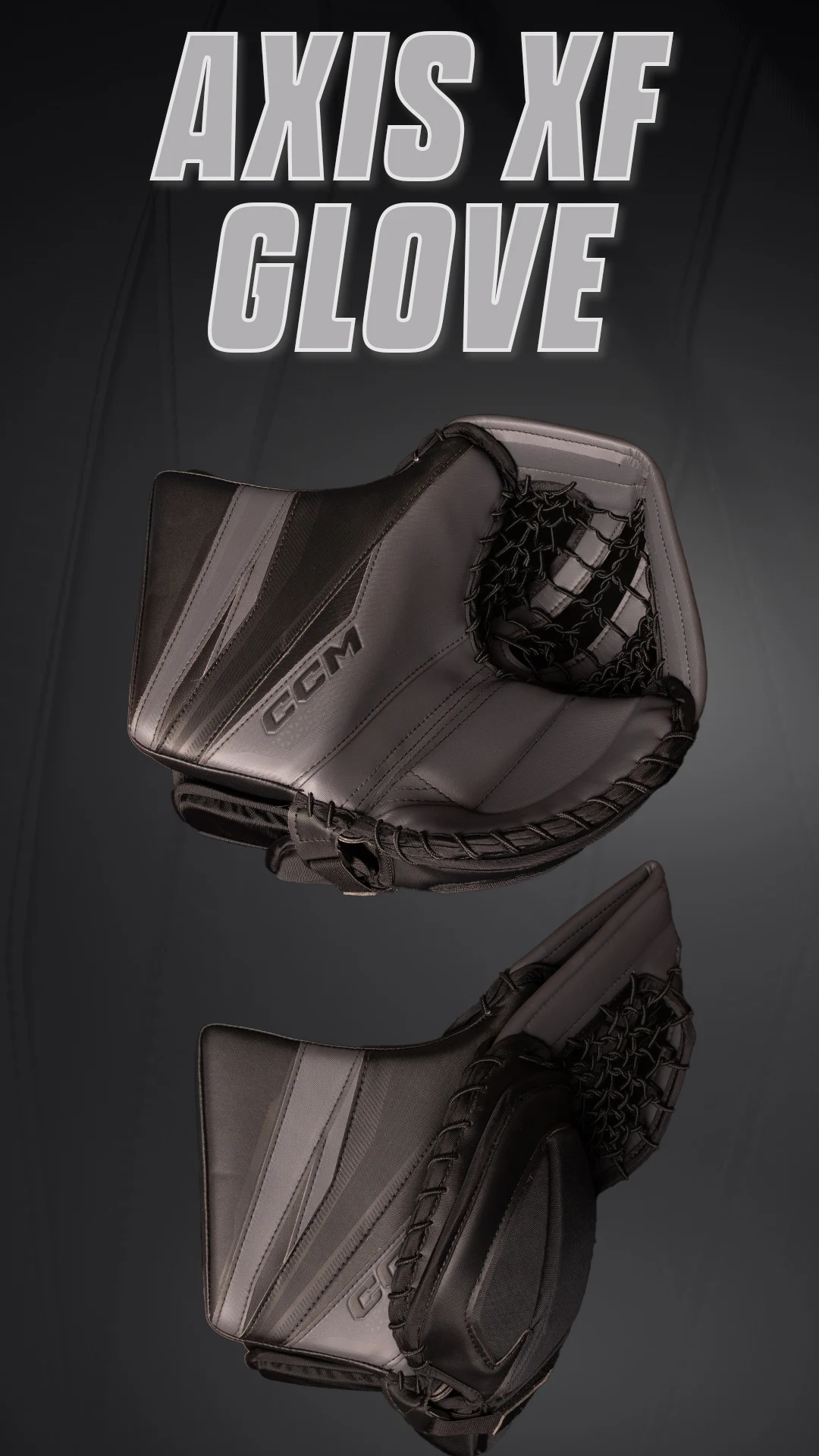
The AXIS 2 glove was a major departure for CCM with the new 591 model that had no finger stalls and completely redesigned internals that finally allowed them to lighten up what had become a relatively heavy glove in previous generations, at least compared to other companies. But give them credit for being willing to go back to the drawing board again with AXIS XF without completely abandoning their intentions to evolve.
The result is an AXIS XF glove that weighs less than 1,000 grams, has finger stalls for the pinky and index finger (much like EFLEX 6), a noticeably softer, more comfortable feel inside, and perhaps most important, is a lot easier to close out of the box.
As InGoal wrote in our AXIS 2 review, the original 591 had a significantly improved closure that better protected the hand and stayed more consistent than the previous designs, but it undoubtedly took longer to break in, and that stiffness was a detractor at retail.
So CCM redesigned the internals again, keeping that consistent, more protective break line and maintain the finger to base of the thumb closure and angle of the original 590 break, but improved both how open the glove present, and how easily it closes.
Redesigned internals of the 591 break glove results in better, easier, closure in a glove that comes in at less than 1000 grams.

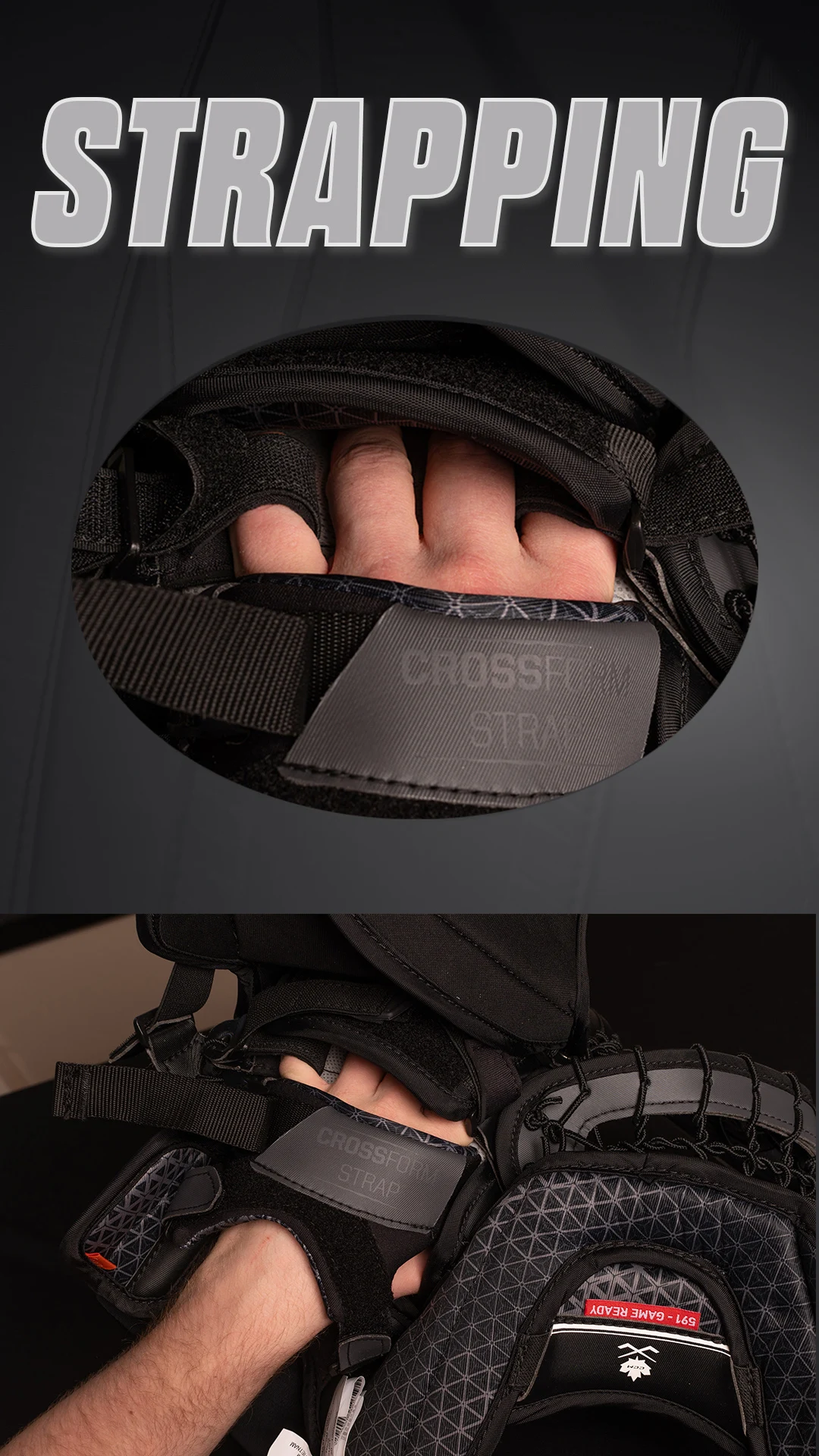
They made adjustments to the 3-point cross form strapping system (that goalies already loved in AXIS 2 and EFLEX 6) to increase range-of-motion in the wrist, and re-built the cuff and backhand, increasing segmentation and adding elastic-and-Velcro attachments to ensure the back of the glove accentuated, rather than hindered, opening and closing.
CCM also added neoprene on the two finger stalls, increasing a noticeably softer, more comfortable feeling inside the glove to go with the easier closure.
Even with all the noticeable improvements and commitment to keep moving forward with the new designs, CCM knows some goalies want what they’ve always had, so the original 580,590 and 600 break designs are all still available on custom orders. But stay tuned, and we’ll bring you more feedback after continued on-ice testing of the new AXIS XF 591.
NEW neoprene pinky and index finger strapping
Heat activated foam for better fit and feel
3-point adjustment system with Crossform Strap
AXIS XF Blocker
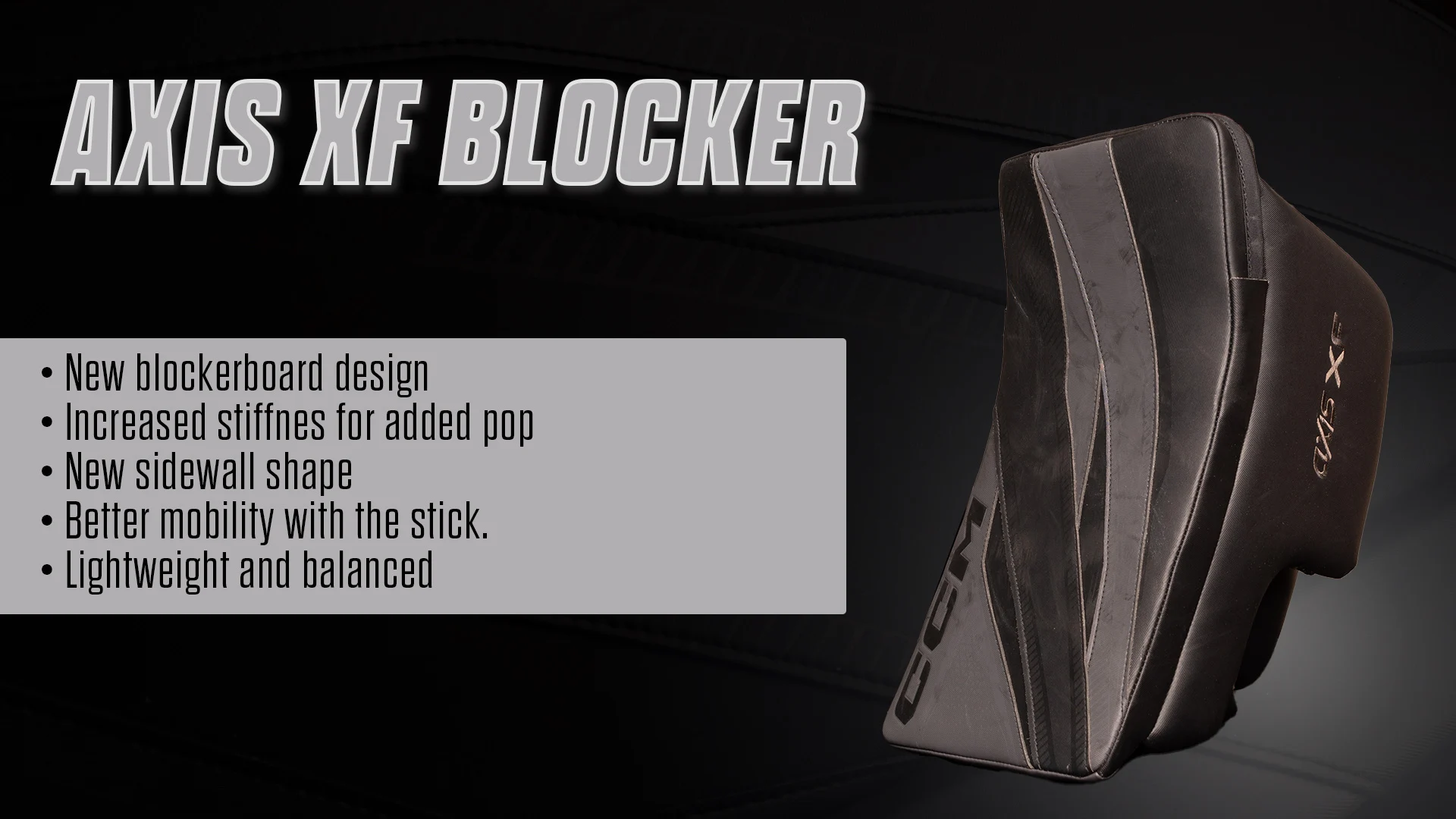
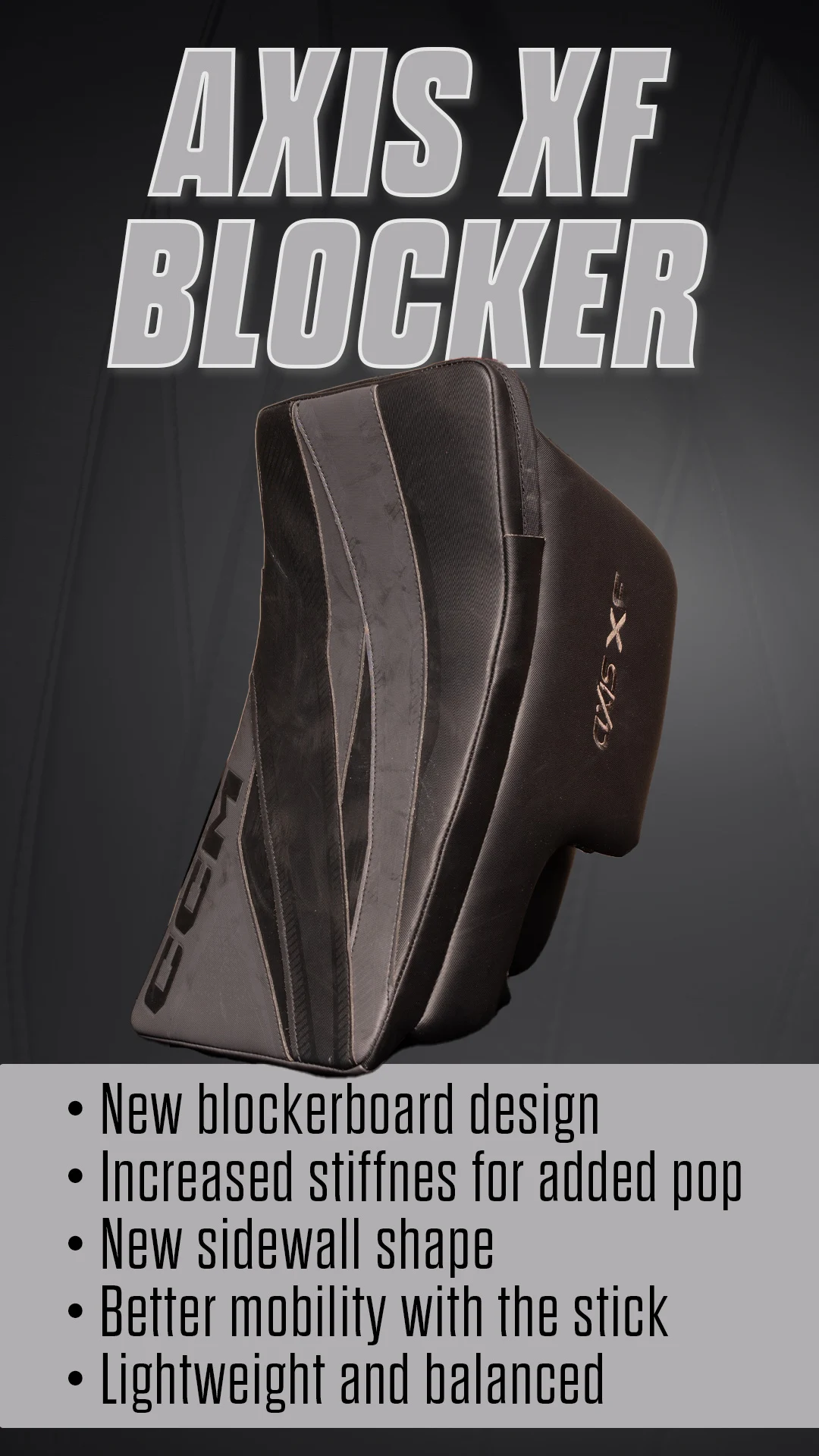
The sidewall has also been modified, with a slightly smaller, squarer shape that is also more rigid, and the finger protector padding between the index finger and sidewall now comes stock as the “straight” option rather than the “curved” option many testers found interfered with the stick in AXIS 2 (it’s still available in custom option, however).
The new blocker feels softer going on, thanks to a new material in the back pad that was also used in the palm to improve durability and feel. We’ll be sure to report back more about how our test goalies like it closer to the official retail launch of AXIS XF, as well as on all the other new features, but hopefully in the meantime this overview gave goalies a chance to understand what’s new and how it works on the latest from CCM.
New blockerboard and sidewall shape in redesigned AXIS XF blocker ensures added pop redirecting rebounds and better mobility with the stick.
New cuff ensures maximum range of motion while the palm has been significantly improved with new material, shape and ventilation.
